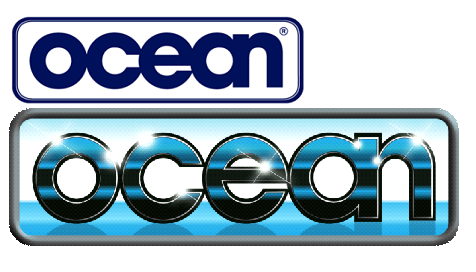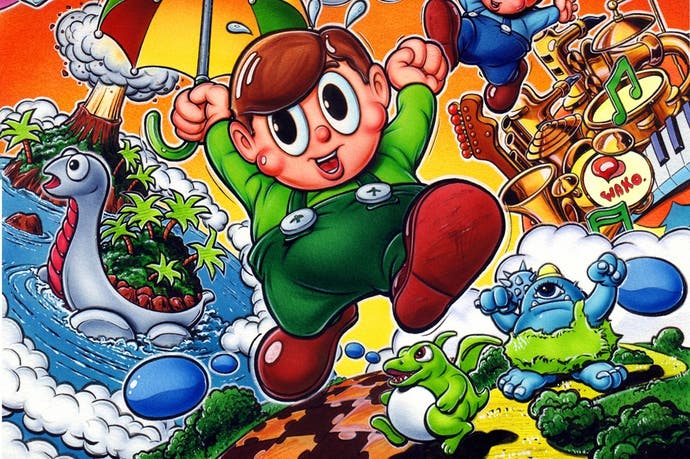Remembering Bob Wakelin
The airbrush is mightier than the sword.
Like many of his fans, I met Bob at one of the gaming expos he attended in support of his good friends, online retro seller The Attic Bug. As no doubt the umpteenth such individual to approach the talented artist that weekend, I was greeted with a friendly 'alright mate' in his soft Liverpudlian tone that served so well in disarming the nerves of awestruck geeks such as myself.

The accompanying grin, almost as wide as the Joker's from one of Bob's most famous pieces, was equally effective, and belied the cantankerous reputation that this honorary scouser had nurtured over the years. The truth was, in person, Bob Wakelin was almost impossible to dislike and, inevitably, I came away from our brief meeting laden with goodies emblazoned with his work for Ocean Software. The crafty sod. "Bob was from the start, such a gentleman," Anna Bäckström of The Attic Bug tells me. "He found the events quite difficult to start with, as he couldn't understand why people would be interested in 'this old crap' - a typical Bob comment. But he grew to love the shows, and he loved to talk to anyone who would listen. He was devastated if he was too ill to attend, and actually went to a couple he probably shouldn't have."
Despite being best known for his work at Ocean, Bob's first love was not video games; in fact he was never much of a fan of them at all, finding them to be an insular occupation that got in the way of one of his favourite pastimes, going to the pub. Instead, as a lad growing up in the 60s in North Wales, Bob dreamed of a career working in comics. After a graphic design course at a local college, he relocated to Liverpool and a steady pay check at a studio based in the city. But the freedom of the freelance was calling him, and in the late 70s, having been elevated to studio manager, he struck out for himself and finally got to work for his ideal company, Marvel. After a brief sojourn playing synths in a local band called Modern Eon ('It was a whim really,' he told Crash Magazine in July of 1985, 'I'd got bored of drawing and we did reasonably well for a while - then we had a row and split up.'), a chance meeting with an acquaintance of David Ward's encouraged Bob into illustrating once more.
Ward, along with his partner Jon Woods, was busy setting up a software house known as Spectrum Games Ltd, and Bob was immediately put to work designing several covers and adverts for its 1983 release schedule. Like many publishers of the time, Spectrum Games appeared to specialise in unofficial arcade clones; Wakelin had little regard for his early work drawing covers for games such as Road-Frog and Caterpilla (Frogger and Centipede clones respectively), yet they stood out from the crowd in these youthful days of the UK video games industry, and helped propel Spectrum Games - soon renamed Ocean Software - into the big league. By the time his relationship with Ocean soured in the mid-90s, Bob had produced almost 100 illustrations for the Manchester-based company and helped cement its place as the premier software house in the UK. The most significant of these designs was perhaps Ocean's logo itself. Originally a plain, white and blue image, after a few extra flourishes from Bob, including a subtle blend of blue shades and some effective shadowing, the logo became the gleaming one instantly recognised by fans today.

Video games themselves in the 80s were often primitive affairs graphically, especially on the 8-bit computers for which Ocean created most of its software. With limited knowledge of the game to work on, Bob would sometimes use his imagination to embellish his work, enticing young fans to opt for Ocean's products, often with the game behind the cover spectacularly failing to match up to its cassette inlay. Each piece of art took Bob around four to five days; he would typically spend a day researching the subject matter before laying down a pencil drawing, filling in the detail, and then airbrushing over so that some of his pencil lines emerged from behind the colour. "I don't like the tubular, plastic look of most airbrush work," he told Crash magazine, "and find that the pencil technique avoids that. Then I generally finish the painting off, adding tiny details in gouache or felt pen."
Bob's style lent all his work a unique look that helped make Ocean's games stand out even more, and he was proving an inspiration, even then. "As a teenager I would sketch some of his game covers in an effort to improve my own art," Bill Harbison, an in-house artist at Ocean, told me. "I would try and shade it and make it look as close to the original as possible. Then, when I started work at Ocean, he was an enigma; nobody I worked with had ever met or even seen him." When Harbison finally glimpsed his idol, it took him by surprise. "I'd always imagined him as looking like a casually-dressed, older man, not too dissimilar from my old art teachers at school. However, when he finally arrived at the studio, I remember seeing a scary-looking punk, dressed in black leather and not looking too happy to be there!"

As the decade progressed, Bob became busier, yet steadfastly insisted on remaining freelance, leaving him free to pursue work from other clients. Yet while he branched out into magazine and comic covers, he rarely, if ever, produced art for rival software houses, deeming loyalty to Ocean an important facet of their relationship. After having produced a loading screen for the arcade conversion Mag Max (from Bob's painting), another Ocean in-house artist, Mark Jones, recalls his next assignment, and one of his favourite Wakelin pieces. "I was given the Spectrum conversion of Wizball as my first full project," he says, "And halfway through the word came downstairs in the dungeons that the Wizball illustration had been delivered, and according to those who had seen it, it was one of Bob's best. I was given a photographic print, took it downstairs and everyone crowded round my desk." Jones, eager to start work on the game's loading screen (which would be based, as was common, on Wakelin's cover art), was, like everybody else, amazed. "Now we all knew the identity the game would have once the adverts were printed and the game appeared on shelves up and down the country."
1987 marked the start of an incredible period for both Wakelin and Ocean. Drawing on the blockbuster appeal of action movie stars, Bob studied photographs of actors such as Arnold Schwarzenegger and bodybuilders such as Lisa Lyon, principally to help him increase the musculature of his cover stars. Arcade conversions in particular benefitted from his approach, with the art for games such as Athena, Renegade, Rastan and Operation Wolf looking utterly fabulous whether on a shelf or in the pages of a magazine. But it was the artist's versatility that often impressed most, with many of his more cartoonish or jovial pieces also proving popular. "The one that caused the biggest reaction at Ocean was Head Over Heels," continues Jones. "We had all seen the game in progress and knew it was amazing. Then we saw Bob's artwork and we were blown away. These tiny monochrome graphics had been brought to life - so that's what Head and Heels really looked like!" Many years after Ocean had folded, Jones met Wakelin at a retro show and began to help him source and clean up some of his missing artwork. Much of the art Bob already owned almost never made it past the mid-nineties when Ocean moved offices. In a 2009 interview, he told the BBC, "They had a warehouse they were going to empty and the art director at the time phoned me and said, 'Bob, your artworks going in the skip'. I had a mate with a van so we immediately drove over and I rescued most of it, probably about 90 per cent of the work I've done."

Bob's final work before parting from Ocean was the 1994 PC-DOS game Central Intelligence. He left video games behind then, too, and kept busy creating art for children's books, before ill-health forced him to retire several years ago. Despite his illness, there were plans for Bob to re-enter the world of video game illustration. "I saw Bob at Play Expo in July 2017," remembers Mark Jones, "and we stood outside in the sun chatting for about half an hour. He told me - which made the whole weekend worthwhile - that plans were in place for him to start producing new art for various Spectrum Next games. I was so excited, I had to make sure I hadn't misheard him. He replied, 'Yeah, I'm really looking forward to it actually. It's been so long since I've done anything like that'" The outpouring of sentiment and love towards Bob last Sunday clearly showed that any such return would have been warmly embraced by the gaming community, as much as his work from the 80s and 90s is still admired today. "It's well known that Bob didn't suffer fools - and he really didn't." says Anna Bäckström. "He was born a punk, and he will forever stay a punk. But he had the biggest heart, and he was never far away from laughter."
Bob Wakelin passed away on Saturday the 20th January 2018 and will be greatly missed. He suffered from a rare bone marrow disease known as Aplastic Anaemia; for more information on this condition please visit www.theaat.org.uk. Our thoughts are with his friends and family at this sad time.

